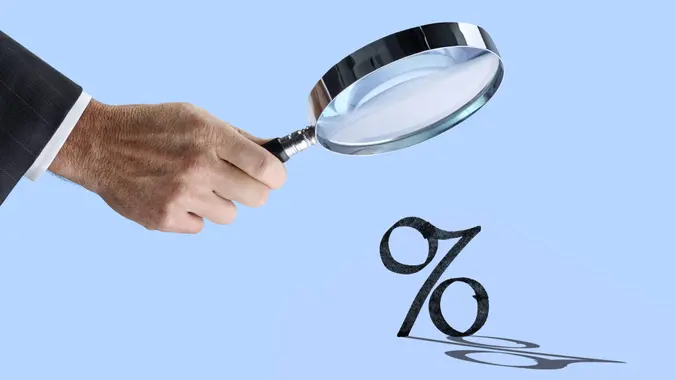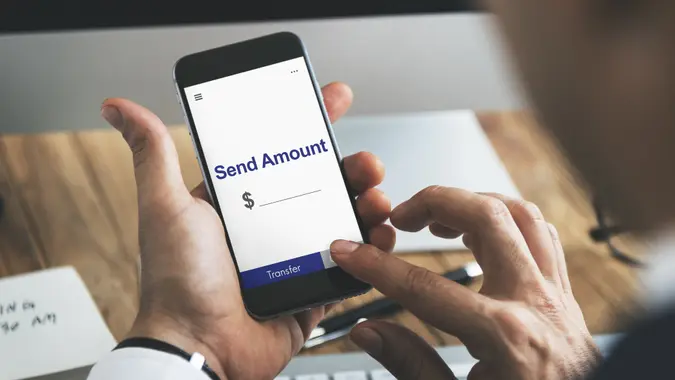3 Kinds of Bank Accounts Consumers Are Opening in 2025 — and Why

Commitment to Our Readers
GOBankingRates' editorial team is committed to bringing you unbiased reviews and information. We use data-driven methodologies to evaluate financial products and services - our reviews and ratings are not influenced by advertisers. You can read more about our editorial guidelines and our products and services review methodology.

20 Years
Helping You Live Richer

Reviewed
by Experts

Trusted by
Millions of Readers
According to a recent TD Bank Survey, 89% of Americans admitted that they’re comfortable with using and adapting to new technology, with 50% stating that they trust AI for providing reliable information. The survey also found that 65% of Americans believe that AI has the potential to increase access to financial tools. As Americans continue to embrace AI in banking, it’s worth exploring the types of banking accounts that consumers are opening these days as we continue to navigate confusing economic times.
GOBankingRates consulted with banking experts to learn about what kinds of bank accounts people are opening this year, what’s driving these trends and what that means for the general populace’s finances. Below is what they had to say.
Also here is the number of bank accounts you should have.
Checking Accounts
Paul McAdam, senior director of banking and payments intelligence at J.D. Power, pointed out from one of their studies that over the last four years, checking accounts have consistently amounted to more than half (50%+) of the new accounts opened. Since the J.D. Power U.S. Retail Banking Satisfaction study only tracks new account opening among customers of the 180 largest branch-based retail banks, the patterns of online-only banks aren’t considered. Consumers are likely seeking out new checking accounts where they can avoid fees and keep more of their own money. With so many options available, banking customers are no longer stuck with the account that they opened up in their childhood, as they can find the right one for their financial goals.
High-Yield Savings Accounts
“In 2025, we’ve seen a continued trend in individuals opening high-yield savings accounts (HYSA) and short-term certificates of deposit (CDs),” said Matt Hicks, vice president of deposit products at First Tech Federal Credit Union. “Unlike traditional savings accounts, HYSAs offer significantly higher interest rates, often up to 4.5% APY, depending on the institution.”
Hicks stressed that due to the uncertain market conditions, a HYSA is an attractive option for individuals who want steady growth. “With high interest rates and economic uncertainty being a general theme over the past few years, the liquidity that comes with high-yield savings accounts has been attractive,” added Gates Little, banking expert and CEO of altLINE and The Southern Bank Company. Customers can access funds more quickly, enjoy fewer limitations on withdrawals and deposits and benefit from stronger interest rates compared to the average savings account.
Short-Term Certificates of Deposit (CD)
CDs are another banking account that Hicks has seen individuals opening this year. “Short-term or long-term CDs are ideal for earning a higher return on excess cash, helping to accelerate savings. CDs can support a myriad of savings goals, but individuals must choose a term that aligns with their financial plan,” he said. Since the rates on these products are fixed for a specific duration of time, consumers are using them to reach financial goals since they know what to expect.
What’s Driving These Trends?
Here’s what’s driving the trends in banking in 2025 and what it means for the general populace’s finances.
Consumers Are Seeking Accessibility
Hicks pointed out that a high-yield savings account and short-term CD give consumers the highest degree of accessibility and liquidity, allowing savvy users the option to continue to shop around for the best rates for their surplus funds. “A driving force behind this trend is sustained evaluation of short-term rates, which has increased rates on these products,” he added.
Consumers Are Maximizing Savings
As long as interest rates remain high, these high-yield accounts will likely remain popular. Little noted that everyone from new college graduates to more affluent, experienced professionals can benefit from a HYSA. He also found that these accounts teach younger people the importance of saving sensibly and making the most of their money.
The J.D. Power study also shared that unexpected fees have been the top obstacle to retail banking customer satisfaction over the last few years. It was also reported that banks have stepped up initiatives to educate on the fee structure and to avoid fees. The good news is that the number of customers who understand their bank’s fee structure went up 5% in the last year.
What’s Next for Banking Options?
Hicks brought up that as rates start to lower, savings accounts will be the most directly impacted and individuals may want to evaluate their saving strategies and time horizon to lock in a higher rate while they can. Consumers are looking to maximize savings, which involves finding the best rate or return and avoiding unnecessary fees. This means that we’ll see consumers seek out the best savings instruments and switch up checking accounts when they aren’t satisfied with the fee structure, hopefully forcing more transparency from the banks.
More From GOBankingRates
 Written by
Written by  Edited by
Edited by 
























